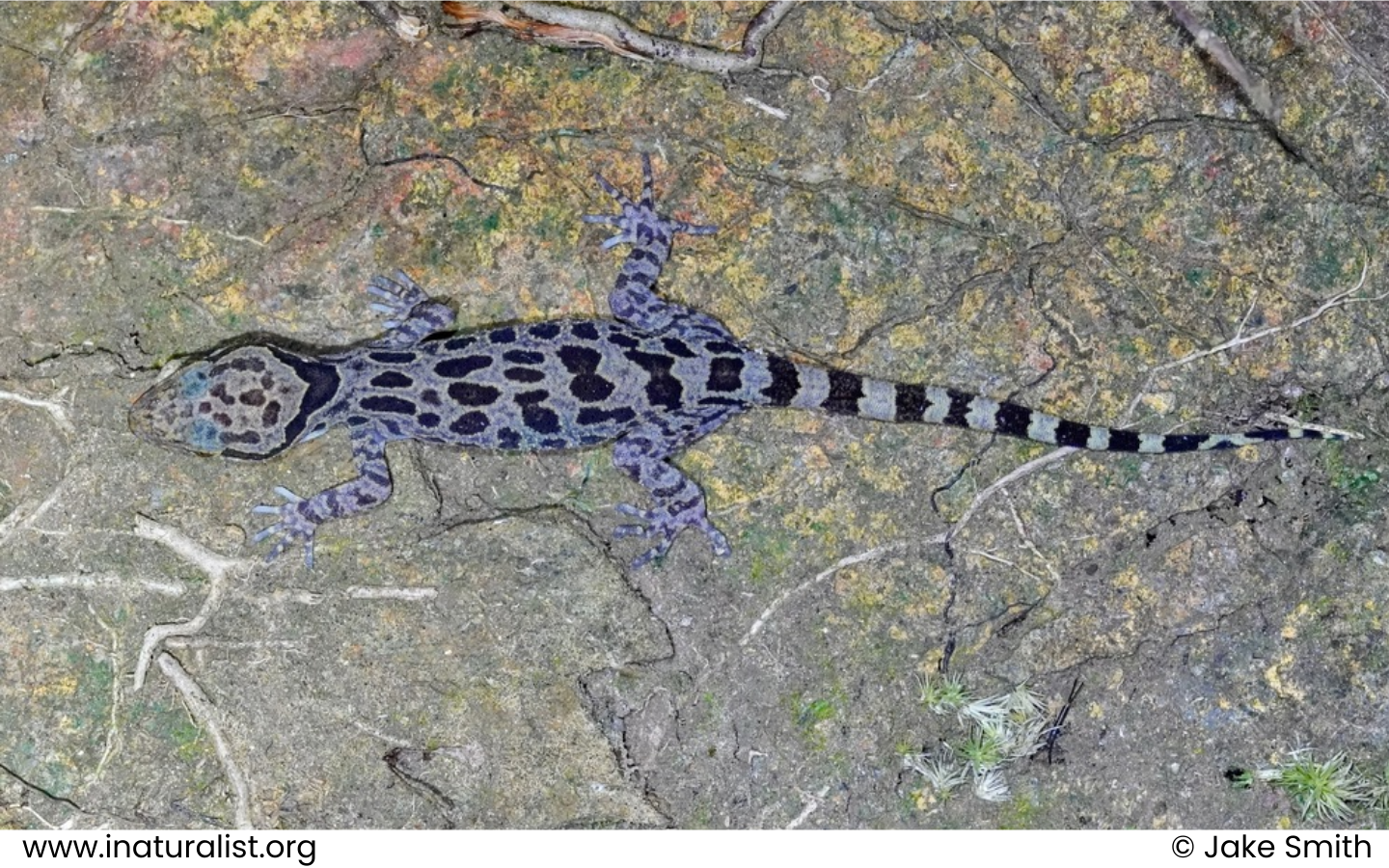
Science name: Cyrtodactylus pseudoquadrivirgatus – Rösler, Nguyen, Vu, Ngo & Ziegler, 2008
Taxonomic: Animalia>> Chordata>> Reptilia>> Squamata >> Gekkonidae >> pseudoquadrivirgatus
Species status: Endemic ; IUCN status: LC (Least Concern)
Description:
Physical characteristics: Cyrtodactylus pseudoquadrivirgatus is a medium-sized gecko with a snout-vent length (SVL) ranging from 70.7 to 83.8 mm. It has a depressed head, distinct from its body, with a long snout wider than the eye diameter. The body is rounded in cross-section and features 16–18 rows of conical tubercles along the back, with smooth ventral scales arranged in 39–40 rows. The tail is longer than the body and shows slight enlargement in the subcaudal scales. Males have 7–9 precloacal pores arranged in a V-shaped series.
Coloration and Appearance: The body is dark brown to black, with narrow dark bands on the back that are bordered by lighter-colored edges. The head has dark blotches, with a dark stripe extending from the eye to the tympanum, and the limbs are banded with darker stripes. The tail features alternating dark and light bands, and the ventral side is generally light brown.
Distribution and habitat:
Elevation: Found at elevations ranging from 400 to 1,000 meters above sea level.
Area: Cyrtodactylus pseudoquadrivirgatus is native to central Vietnam, specifically in Thua Thien-Hue Province, and has also been recorded in Salavan Province, Laos.
Habitat: This species inhabits tropical rainforests, including areas near streams, and is often found on granitic rocks and trees in primary and secondary forests. It also occurs in wetlands, such as seasonal and intermittent rivers or creeks.
Behaviour and ecology:
Lifestyle: Cyrtodactylus pseudoquadrivirgatus is a nocturnal and arboreal gecko, active at night on rocks and tree trunks in forested areas. During the day, it hides in leaf litter and rock crevices.
Reproduction: This species is oviparous, with females laying two eggs during the early rainy season. The eggs are deposited in leaf litter or crevices, and the sex of the hatchlings is influenced by environmental temperature.
Diet: It primarily feeds on small insects found in its forested and rocky habitat.
Conservation and status:
IUCN Red List Category and Criteria: Listed as Least Concern under criteria ver 3.1, due to its relatively stable population and wide distribution.
Threats: Although not currently under significant threat, habitat degradation due to deforestation and human activity, especially in wetland and forest areas, may pose future risks to the species.
Crocodile Trail – The Best Birding Trail in Cat Tien National Park
If you’re a birder or nature photographer planning a trip to Vietnam, few places offer [...]
Cong Troi Trail – Top 1 Dalat Plateau Birding Trail Experience
If you’re a birder or nature photographer planning a trip to Vietnam’s Central Highlands, the [...]
How to Identify the Greater Sand Plover, Tibetan Sand Plover and Siberian Sand Plover
Identification Differences within the Sand Plover Complex: The sand plover group, which was traditionally divided [...]
Highlights of Cat Tien National Park Reptiles and Amphibian Endemics
Spanning over 71,350 hectares of tropical forests, grasslands, and wetlands, Cat Tien National Park is [...]
Highlights of Cat Tien National Park Mammals in a World Biosphere Reserve
In addition to reptiles and birds, Cat Tien National Park is also rich in mammals, [...]
Kontum Plateau Endemic and Highlight bird
Kontum Plateau Endemic And Highlight Bird species like Chestnut-eared Laughingthrush and top birding routes while [...]